Welcome to the sacred abode of Grishneshwar temple, the village of Verul within Maharashtra’s Sambhajinagar district.
However, this divine sanctuary is a testament to the devout reverence for Lord Shiva, housing one of the twelve revered Jyotirlingas. The Temple’s spiritual significance transcends time, drawing pilgrims from far and wide to experience its aura of sanctity and divine grace.
Steeped in legend and myth, this hallowed site carries the echoes of ancient tales, invoking a sense of awe and reverence among those who tread its sacred grounds.
Devotees flock to the temple to offer their prayers and seek blessings from the divine deity, Lord Shiva, whose presence is believed to permeate every corner of this sacred edifice.
Altogether, the architecture of the Temple, adorned with carvings and timeless craftsmanship, attracts visitors with its grandeur and magnificence. Join us on a spiritual journey to the temple, where faith meets devotion and the soul finds solace in the divine embrace of Lord Shiva.
1. History
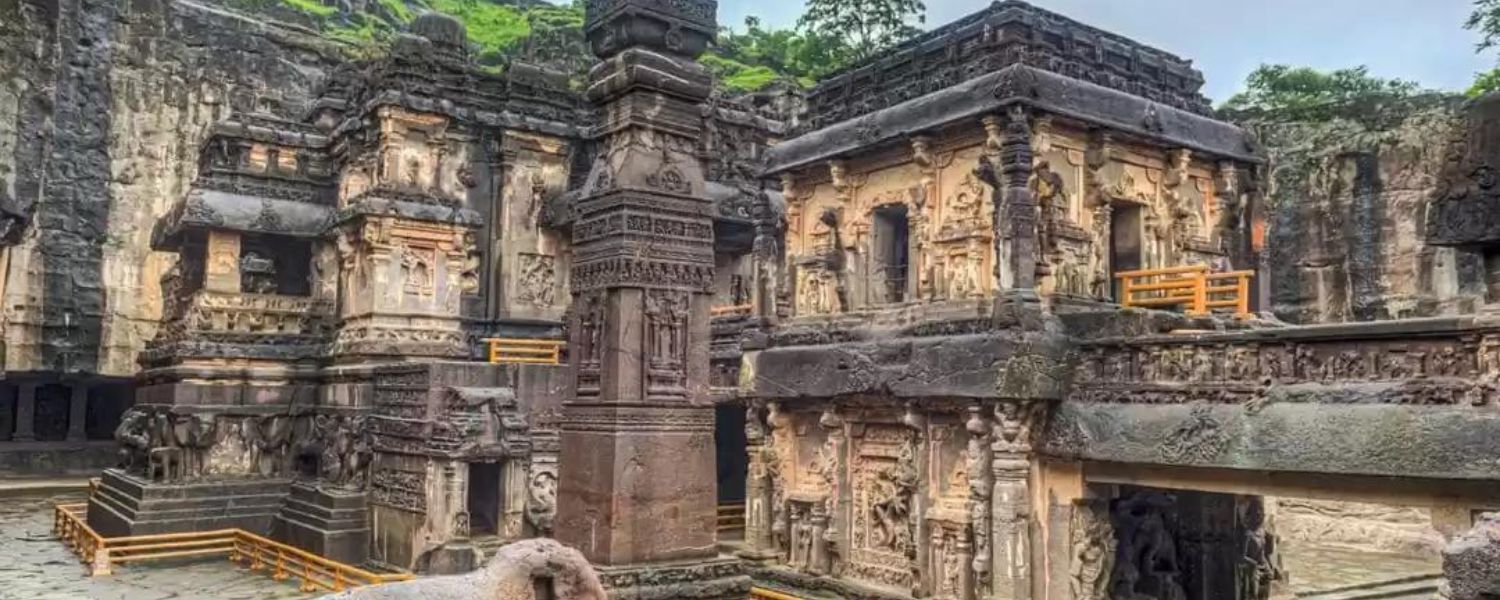
Located in Maharashtra, India, the Grishneshwar Temple holds a rich history marked by several restoration efforts over the centuries. Its origins go back to ancient times, but it underwent significant renovations three times, each contributing to its present grandeur.
However, the first restoration occurred in the 16th century under the patronage of Maloji Bhosale, the grandfather of the renowned Maratha warrior king, Shivaji.
This initial effort aimed to revive the Temple’s glory and significance within the region. However, it was in 1730 that the Temple underwent its most extensive transformation.
This time, it was Gautami Bai Holkar, the wife of Malhar Rao Holkar, who spearheaded the reconstruction efforts. Moreover, the Temple was rebuilt from the ground up, reflecting a blend of architectural styles characteristic of the era.
However, this restoration enhanced the Temple’s structural integrity and added to its aesthetic appeal, drawing devotees from far and wide. Yet, the tale of restoration didn’t end there. Furthermore, Ahilyabai Holkar, renowned for her patronage of art and architecture, took up the mantle of preserving the Temple.
Moreover, under her guidance, further renovations were carried out, ensuring that the sanctity and splendor of the Temple remained intact for generations to come. Today, the Temple stands as a testament to the enduring devotion of its patrons and the timeless allure of Indian architecture and spirituality.
2. Architecture
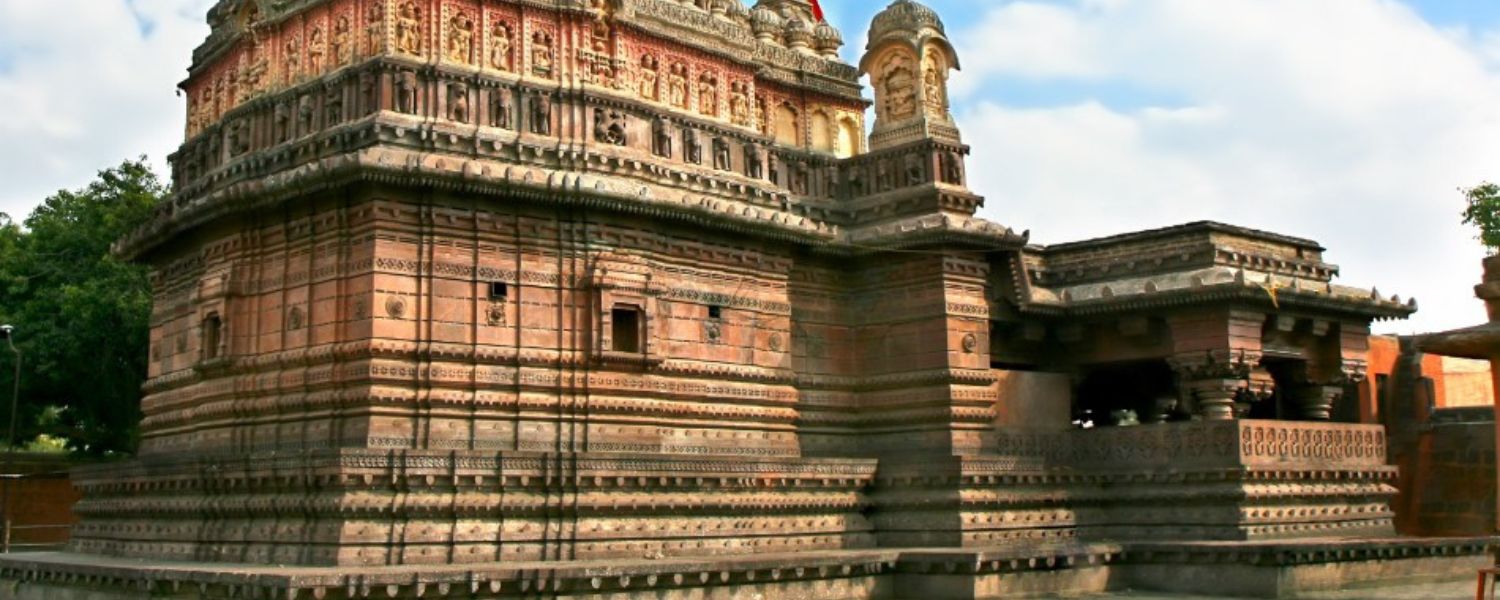
However, the Grishneshwar Temple, a masterpiece of Maratha temple architecture, is a stunning testament to ancient craftsmanship and devotion. This architectural gem is constructed primarily from red rocks and boasts a distinctive five-tiered shikhara, rising proudly against the sky.
Its compact dimensions, measuring 240 feet by 185 feet, belie its significance as one of India’s most miniature Jyotirlinga temples, revered by countless devotees.
Also, the Temple’s design is intricate and harmonious, showcasing the ingenuity of its builders. Its central feature, the shikara, gracefully ascends in tiers, culminating in a pinnacle that seems to touch the divine.
Surrounding the sanctum sanctorum is a spacious courtyard supported by 24 majestic pillars, each a testament to the Temple’s structural integrity and architectural grandeur.
Furthermore, every aspect of the Temple, from its sturdy construction to its ornate embellishments, speaks of a rich cultural heritage and unwavering spiritual devotion. However, as visitors traverse its hallowed halls and gaze upon its sacred sculptures, they are transported to a realm where time stands still and the divine presence is palpable.
3. Significance
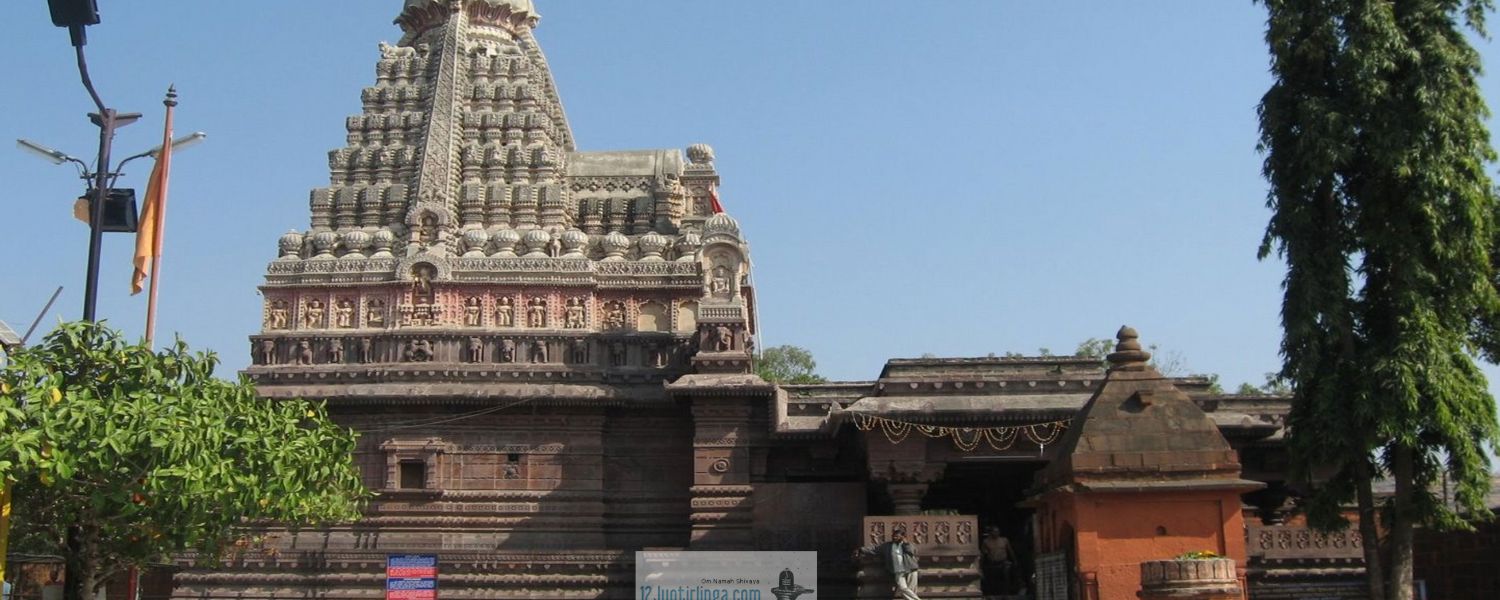
The Grishneshwar Temple, also known as the abode of the ‘Lord of Compassion,’ holds profound significance in Hindu mythology. However, situated in Maharashtra, India, this ancient Temple is revered by devotees for its spiritual essence and architectural grandeur. The term ‘Grishneshwara’ denotes the compassionate nature of the deity worshipped here, making it a sacred site for seekers of divine blessings.
Furthermore, one of the most remarkable features of the Temple is the belief that holy water springs from its depths, symbolizing purity and sanctity. This sacred water possesses divine qualities, drawing pilgrims from far and wide seeking spiritual rejuvenation and solace.
Additionally, upon entering the temple precincts, devotees often pay homage to Kokila Mata at a small shrine, underscoring the inclusive and diverse religious practices observed at the site.
Architecturally, the Temple stands as a testament to the pre-historic South Indian architectural style and structure, showcasing intricate carvings, ornate pillars, and captivating sculptures that narrate tales of ancient lore.
Each aspect of its design reflects a rich cultural heritage and a deep-rooted connection to tradition, inviting visitors to delve into the historical and spiritual realms intertwined within its walls.
4. Location

Grishneshwar Temple, also known as Grushneshwar Jyotirlinga Mandir, is a shrine dedicated to Lord Shiva, nestled in the serene Verul village of Sambhaji Nagar district, Maharashtra. Furthermore, this sacred site holds immense significance for devotees as it is counted among the twelve Jyotirlinga temples scattered across India.
However, the Temple boasts the distinctive architectural style of Hemadpanti, showcasing intricate craftsmanship and historical charm. Located amidst the rustic beauty of Verul, Sambhaji Nagar, the Temple beckons pilgrims and tourists alike with its spiritual aura and architectural grandeur.
As visitors enter its premises, they are greeted by the soothing ambiance and the palpable sense of divinity permeating the air.
However, Devotees flock to this hallowed site to pay homage to Lord Shiva and seek his blessings for prosperity, well-being, and spiritual fulfillment. However, the Temple’s serene surroundings and tranquil atmosphere offer a sanctuary for introspection and prayer, making it a cherished destination for seekers of spiritual solace.
5. Festivals Celebrated
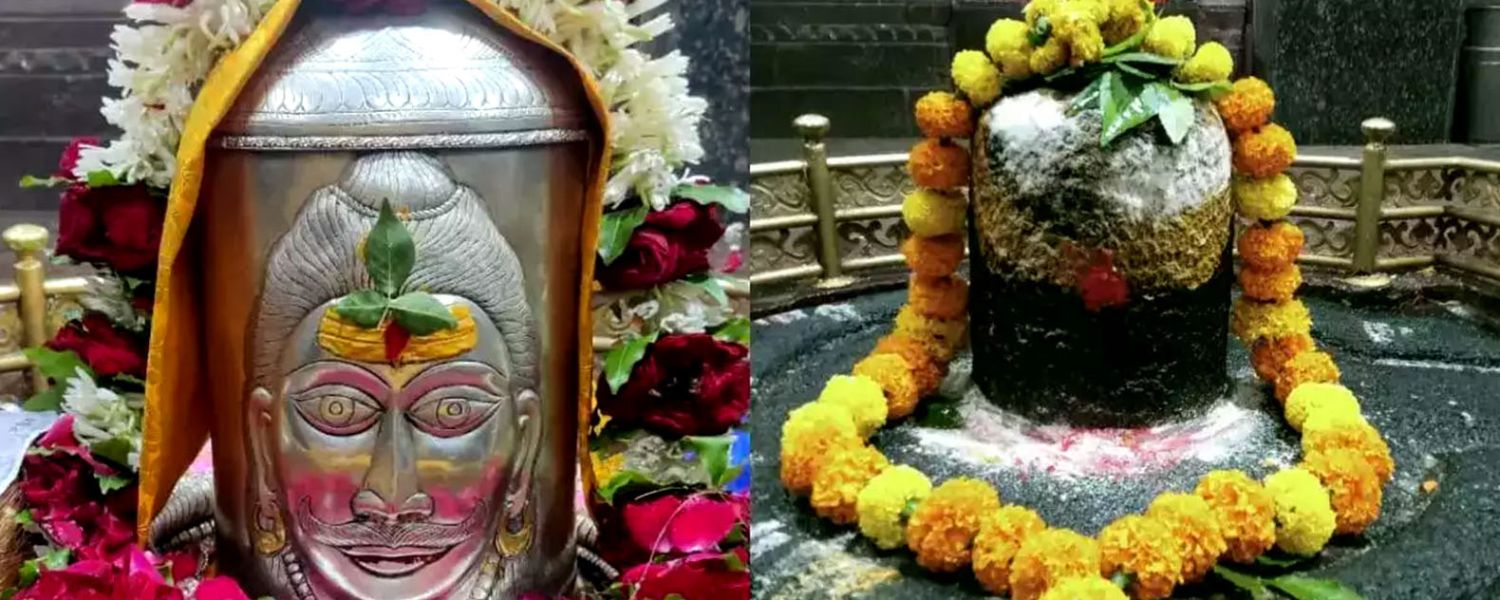
Grishneshwar Temple, renowned for its spiritual significance, is an emblem of devotion and faith. Among the various festivals celebrated here, Mahashivratri stands out prominently. This auspicious occasion witnesses devotees flocking to the temple premises to partake in the festivities and seek blessings from Lord Shiva.
At dawn, the Temple resonates with the melodious chants of the Kakad Aarti, marking the commencement of Mahashivratri celebrations. This sacred ritual holds immense significance as devotees gather to offer their heartfelt prayers to the divine.
However, the serene ambiance of the Temple, adorned with fragrant flowers and incense, creates a tranquil atmosphere conducive to spiritual contemplation.
Devotees immerse themselves in the divine aura, seeking solace and enlightenment. The Kakad Aarti serves as a soul-stirring experience, instilling a sense of devotion and reverence among the worshippers.
As the first rays of sunlight illuminate the temple premises, devotees fervently invoke the blessings of Lord Shiva for prosperity and well-being.
Moreover, Devotees engage in various rituals and ceremonies throughout the day, expressing their unwavering devotion to the divine. The air resonates with the musical recitation of sacred hymns and mantras, filling the hearts of devotees with heavenly bliss.
6. Temple Timings and Visiting Hours
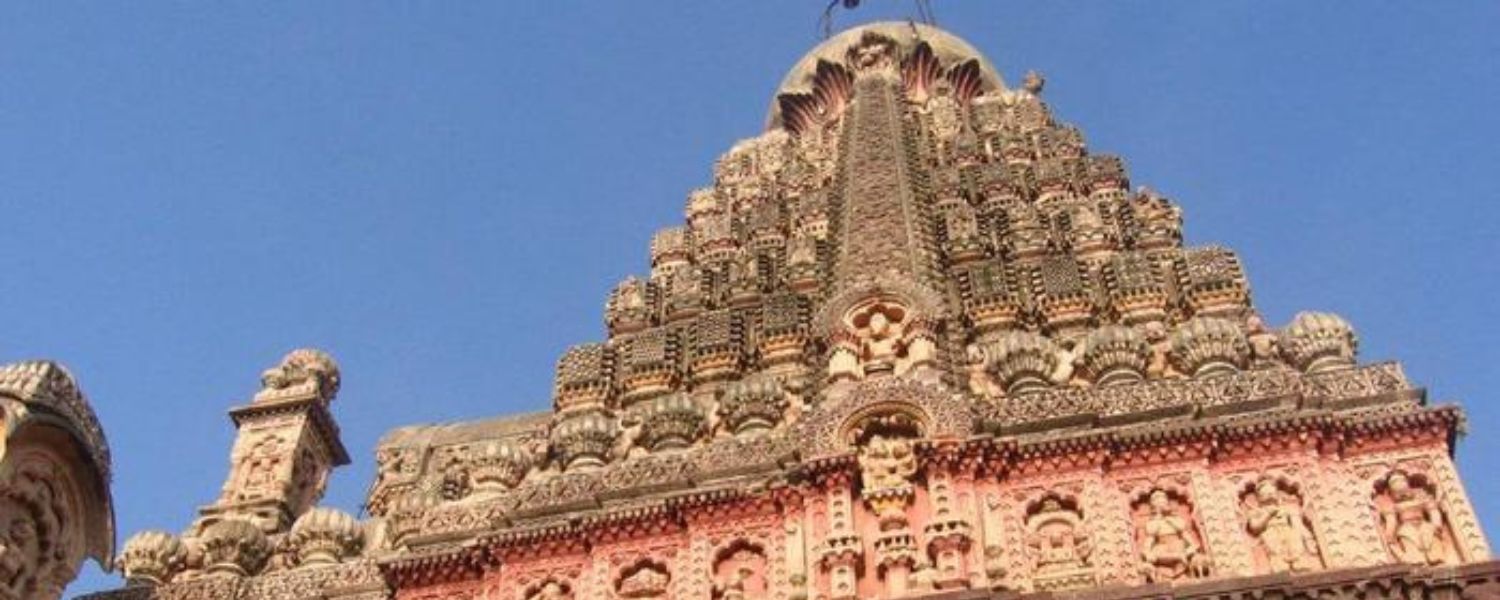
Grishneshwar Temple, where divine tranquility awaits visitors seeking solace and blessings. Nestled amidst the picturesque landscapes, this sacred Temple opens its doors to devotees daily from 5:30 am to 11:00 pm.
However, during the auspicious month of Shravan, which falls between August and September, the Temple extends its visiting hours from 3:00 am to 11:00 pm, giving devotees ample time to partake in rituals and seek divine blessings. Moreover, the Temple of Lord Shiva symbolizes faith and devotion, drawing pilgrims from afar.
The Temple’s tranquil ambiance and architectural grandeur create an atmosphere conducive to spiritual contemplation and reverence. Whether you seek blessings for prosperity, health, or peace of mind, visiting this sacred site promises to uplift your soul and rejuvenate your spirit.
As you step into the hallowed premises of the temple, you are greeted by the melodic chants of prayers and the fragrance of incense, transcending you into a realm of divine bliss.
The Temple’s serene environment provides the perfect setting for meditation and introspection, allowing devotees to connect profoundly with the divine.
7. Nearby Attractions
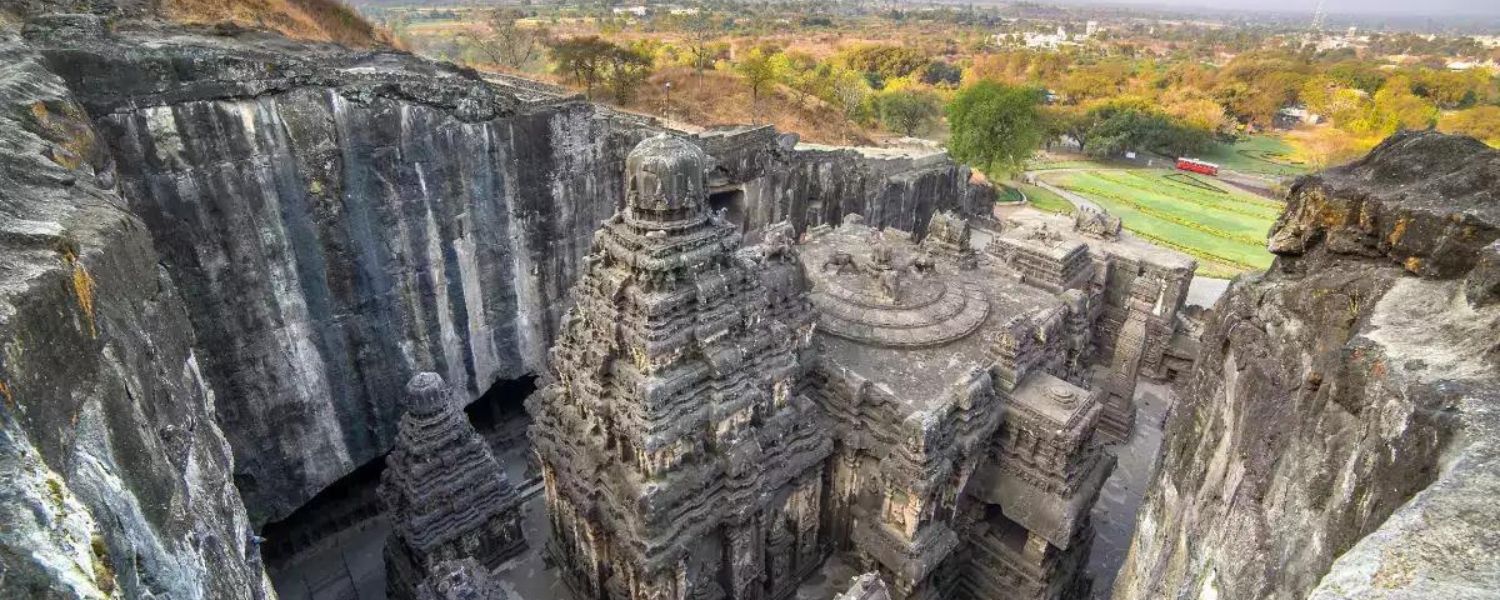
Grishneshwar Temple is a sacred site nestled amidst the serene landscapes of Maharashtra, India. As you embark on a spiritual journey to this revered Temple, be prepared to explore the rich tapestry of nearby attractions that offer a perfect mixture of cultural heritage and natural splendor.
At the heart of your visit lies the majestic Grishneshwar Jyotirlinga Temple, a place of worship dedicated to Lord Shiva, renowned for its architectural grandeur and spiritual significance.
Adjacent to the Temple stands the Bhooteshwar Mandir, an ancient shrine steeped in mythology and folklore, adding to the mystical charm of the surroundings.
For those seeking to delve deeper into their spiritual quest, a visit to the Bhimashankar Temple is highly recommended; offering a tranquil retreat amidst lush greenery and cascading waterfalls.
Additionally, history enthusiasts can explore the timeless marvels of the Ajanta and Ellora Caves, UNESCO World Heritage Sites that showcase exquisite rock-cut architecture and ancient Buddhist art.
8. Renovation and Restoration Efforts
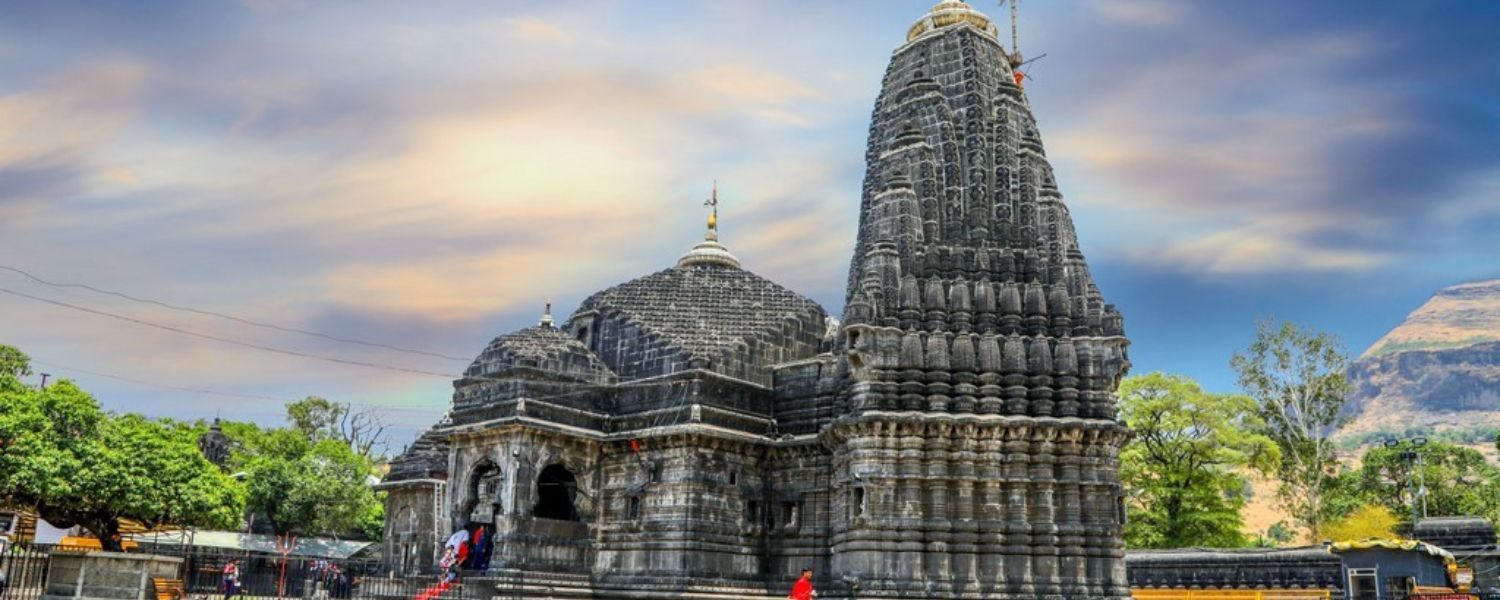
Renovation and restoration efforts at Grishneshwar Temple, one of the twelve Jyotirlinga shrines dedicated to Lord Shiva in Maharashtra and known as Shiva Jyotirlinga in Maharashtra, have been pivotal in preserving this sacred site’s rich heritage and ensuring its longevity for future generations.
Over time, environmental factors and natural wear and tear had taken a toll on the Temple’s structural integrity, prompting the need for extensive renovation and restoration endeavors.
Led by a team of skilled artisans and conservation experts, these efforts have involved meticulous attention to detail to retain the Temple’s architectural authenticity while implementing modern techniques to reinforce its structural stability.
From repairing weathered facades to reinforcing delicate carvings and sculptures, every aspect of the Temple’s intricate design has been carefully attended to. Furthermore, initiatives to enhance visitor experience and accessibility have been integrated into the renovation plans, including installing better lighting, signage, and pathways.
These efforts aim to safeguard the Temple’s cultural heritage and create a more immersive and informative experience for pilgrims and tourists alike.
9. Spiritual Practices and Offerings

Grishneshwar Temple is an architectural marvel nestled amidst the serene landscapes, where spiritual seekers find solace and enlightenment. Towering gracefully with its five-layered shikhara, this Temple stands as a testimony to timeless craftsmanship and devout reverence.
As you enter, the intricate carvings adorning the pillars narrate ancient mythological tales, predominantly centered around the divine manifestations of Lord Shiva and the ten avatars of Lord Vishnu, evoking a sense of divine presence and cosmic connection.
At the heart of the Temple lies the sanctum sanctorum, the garbhagriha, where devotees behold the sacred Shivalinga, facing the auspicious east.
Here, amidst the fragrant swirls of incense and the murmurs of devout prayers, one can experience a profound spiritual elevation and inner tranquility. The ambiance resonates with the chants of sacred mantras, fostering an atmosphere conducive to deep meditation and soulful contemplation.
Spiritual seekers and pilgrims flock to the Temple to offer their prayers, seek divine blessings, and partake in the rich tapestry of spiritual practices and offerings that enrich the soul and nourish the spirit.
Whether performing ancient rituals, offering floral tributes, or simply surrendering one’s heart at the feet of the divine, every act reverberates with profound devotion and unwavering faith.
10. Cultural Importance
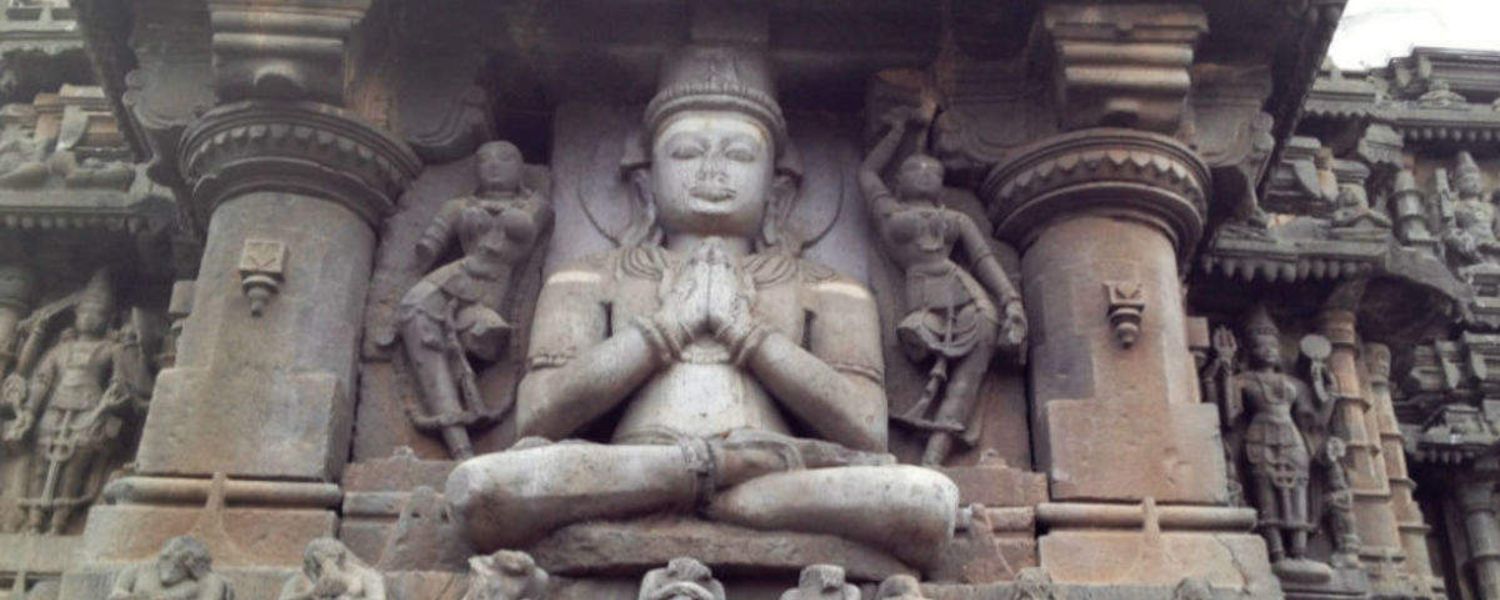
Grishneshwar Temple, nestled in the heart of India, stands as a majestic symbol of Hindu culture and spirituality. With its intricate architecture adorned with rich sculptures depicting tales from ancient scriptures, the Temple exudes an aura of divine grandeur.
Each corner of the Temple resonates with the vibrant religious life within its sacred walls, offering a serene sanctuary for devotees and visitors alike. The significance of the Temple transcends its architectural marvels and artistic beauty as one of the 12 Jyotirlingas, revered manifestations of the Hindu god Shiva.
This sacred site holds a profound spiritual importance in Maharashtra all jyotirlinga. Pilgrims embark on journeys from far and wide, drawn by the sanctity and power believed to emanate from these sacred stones.
For devout Hindus, visiting the Temple is not merely a religious obligation but a deeply cherished pilgrimage, offering solace, blessings, and a sense of divine connection.
Beyond its religious significance, the Temple also serves as a cultural beacon, showcasing the enduring legacy of Hinduism. Its serene ambiance and spiritual aura attract tourists from across the globe, eager to witness the timeless traditions and rituals that unfold within its hallowed halls.
As visitors immerse themselves in the Temple’s atmosphere, they become part of a tapestry woven with faith, devotion, and centuries-old traditions.
Conclusion
In conclusion, the Grishneshwar Temple is a timeless testament to devotion and an architectural marvel. As one of the 12 revered Jyotirlinga temples dedicated to Lord Shiva, it holds profound significance for Hindus worldwide. Situated in the serene village of Verul in Maharashtra, this sacred site draws pilgrims and tourists alike, seeking spiritual solace and cultural enrichment.
However, the Temple’s rich history and intricate architecture captivate visitors, showcasing the brilliance of ancient Indian craftsmanship and religious fervor. Its spiritual ambiance resonates with the chants of devotees, creating an atmosphere of reverence and tranquility.
Beyond its religious significance, the Temple symbolizes unity, bringing people of vast backgrounds together in reverence for a common spiritual heritage.
It is a faith beacon guiding believers toward enlightenment and inner peace. Visiting the Temple is not merely a physical journey but a soul-stirring experience, leaving an impression on all who venture within its hallowed halls.
FAQ
What is Grishneshwar Temple famous for?
The Temple, also known as the Grineshwar Jyotirlinga Temple, is immensely significant in Hindu mythology as one of the Twelve Jyotirlingas to Lord Shiva. It is renowned as a site of divine worship and pilgrimage, drawing devotees from far and wide seeking blessings and spiritual solace.
What are the rules for Grishneshwar Temple?
Devotees visiting the Temple must adhere to specific rules and customs, such as dressing modestly, removing footwear before entering the Temple, and maintaining silence and reverence within the sacred precincts. Photography and videography might be restricted in certain areas, and offerings to the deity are often regulated.
What are the miracles of the Grishneshwar Temple?
The Temple is steeped in legends of miracles attributed to Lord Shiva’s divine presence. Devotees believe in the deity’s power to grant boons, heal ailments, and alleviate suffering, as recounted in numerous ancient texts and folklore.
How long is the darshan at Grishneshwar?
The duration of darshan (viewing of the deity) at the temple can vary depending on the crowd and auspicious occasions. Generally, it may take a few minutes to an hour or more, especially during peak pilgrimage seasons or festivals. Devotees are advised to plan their visit accordingly and to be patient during the darshan process.










